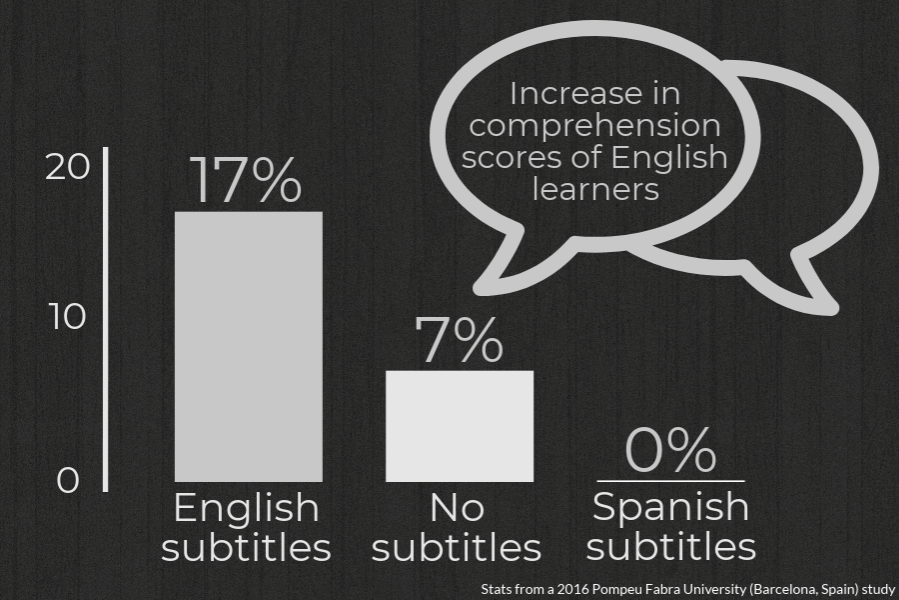Increase learning, make foreign languages fun again
November 29, 2017
I remember when learning a foreign language was cool. Being able to recite the French alphabet, count to 20 in Chinese or introduce yourself in Spanish was exciting and motivating. But somewhere along the way, the novelty wore off, and some people started to view foreign languages as an annoyance rather than an adventure. It became rare to hear people talk about foreign languages except the occasional grumble about vocab quizzes and orals.
Then, there was a revolution in Spanish 4 classes: El Internado. With the introduction of the Spanish telenovela, people who had done nothing but complain about conjugation for months on end were suddenly enthusiastic about learning Spanish. I didn’t take Spanish, but it seemed to me that I was witnessing a metamorphosis—the Spanish 4 crowd had undergone a rapid transition from sluggish students to excited learners.
But Spanish 4’s regular incorporation of TV shows into class is a rare practice in the foreign language department, Spanish teacher Kathleen Bartels said. Other foreign language teachers should follow the Spanish 4 teachers’ example and incorporate TV shows or other media into their classes. They’re the perfect tool for balancing authentic and fun learning.
Student interest in El Internado didn’t just spark laughs; it also improved their focus and memory. Watching the show and taking relevant quizzes afterwards helps students pick up vocabulary, Bartels said. In fact, listening to a single TV episode in a foreign language, with subtitles in that language, improves students’ listening comprehension test scores by 17 percent, according to a study by Pompeu Fabra University.
This is because in a classroom, most students’ only exposure to a native or fluent speaker is the teacher. But with the addition of TV shows, they can listen to dozens more authentic speakers in different speaking styles. They also get to see how words correspond to actions or reactions in the real world, providing a deeper understanding of what words mean.
Furthermore, the show has the added benefit of improving students’ understanding of the informalities of language. Colloquial language, which can almost never be found in textbooks, is a crucial part of achieving fluency. For example, students learned that “Hablando del rey de Roma,” which by literal translation is “talking to the king of Rome,” actually translates in meaning to “speak of the devil,” just from watching El Internado, junior Marianna Pennybacker said.
In addition to TV shows, activities like listening to the radio and reading newspapers in foreign languages could also achieve similar effects. For example, listening to a radio segment and attempting to transcribe the material helps students learn to decode individual sounds and improves their understanding of how natives pronounce words or put together sentences, Pascal Hamon of the English Language Institute at Missouri State University explained in a 2016 interview with Voice of America.
It’s true that foreign language classes are already busy trying to keep up with vocabulary and curriculum requirements. But taking half an hour every one to two weeks to do a more engaging activity, or even asking students to watch shows on their own time, will have a longer-term effect that we can’t discount. TV shows can spark a love for a language that lasts a lifetime—a love that textbooks and slideshows simply can’t match.










